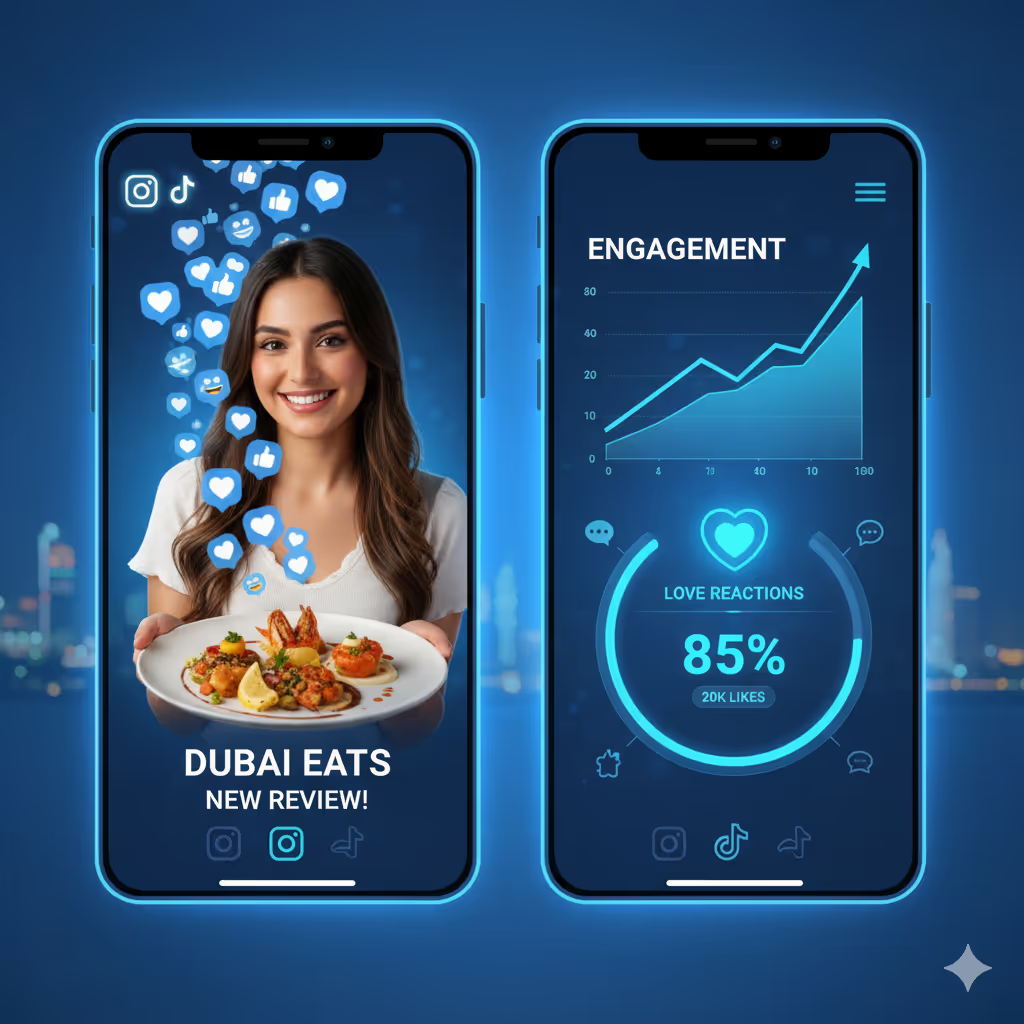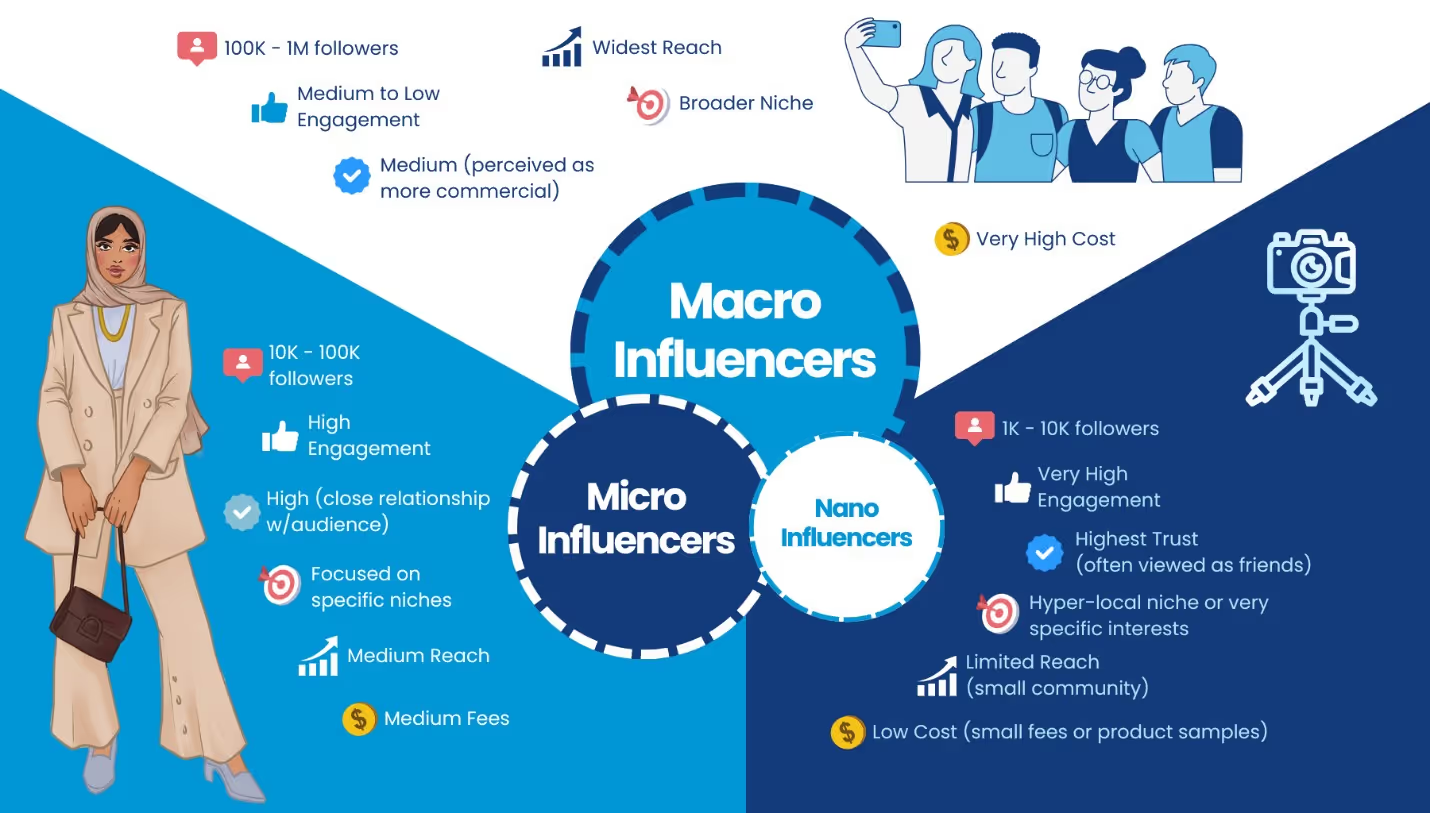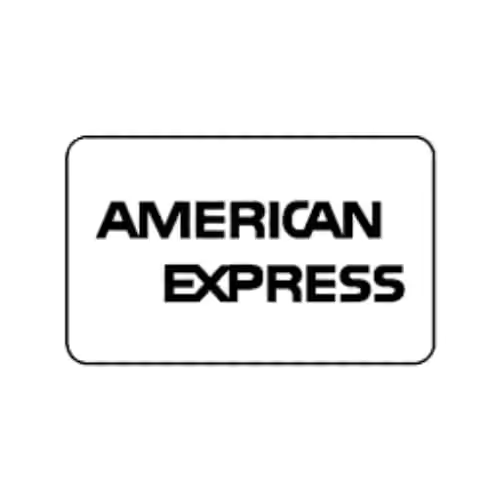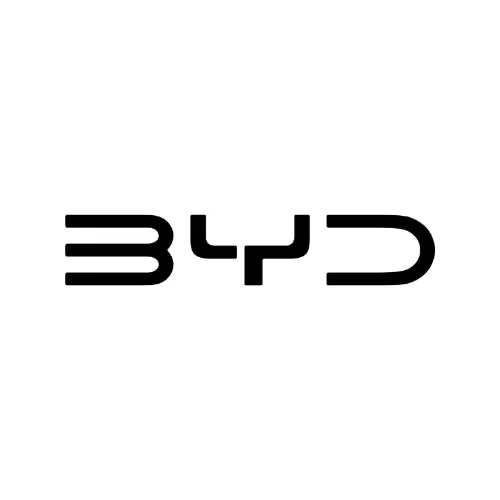Dubai Restaurants: A Performance-First Influencer Playbook to Turn Content into Reservations

Dubai's food and drink scene changes quickly. New places open every week, diners chase trends, and social media is full of paid ads that blend in with the noise.
The restaurants that win in 2025 aren't giving away free meals to anyone with followers. Instead, they're running performance-based influencer campaigns that follow UAE rules, reach the right people, and keep track of conversions down to the last dirham.
This guide gives Dubai restaurants a full, legal, and measurable way to plan, budget, carry out, and show ROI from influencer marketing without having to guess or use vanity metrics.
Phase 1: Regulatory and strategic foundation
To build an influencer engine that works in Dubai, you need to start with compliance and clarity, not content and captions.
If you skip the legal step or the goal-setting step, even the smartest creative won't be able to save the campaign.
Get these three things straight from the start: licensing, goals, and vetting standards that put the quality of the audience ahead of the number of followers.
Non-negotiable compliance: UAE influencer license
Any paid creator who promotes a business in the UAE must have the right influencer license. If a brand hires an unlicensed influencer, they are both responsible.
In practice, this means checking the influencer's valid permit before hiring them—no exceptions—because penalties could hurt the brand's reputation and stop the campaign.
Include license verification in the procurement process and keep the paperwork with the contract and deliverables sheet.
What does success mean: awareness or acquisition?
Fuzzy goals lead to fuzzy results, so make sure you know what you want to achieve before you pick creators or content formats.
Awareness campaigns put reach, impressions, and content saves at the top of their lists; acquisition campaigns give priority to tracked reservations, walk-ins, and delivery orders that are linked to codes or UTMs.
A simple alignment rule: Awareness means getting a lot of people to see your macro reels and event coverage.
Acquisition means getting micro- and nano-creators to post Stories with special codes and time-limited deals.
Related Article:
Micro vs. Macro-Influencers: Which Is Right for Your UAE Brand?
Meet the Top 10 Mega Influencers Shaping the Gulf’s Digital Landscape
The vetting checklist: more than just follower counts
A creator with 35,000 followers in another country won't move tables in Jumeirah. Don't look at the number of followers first; look at how well they fit your geography and demographics.
Check the location (Dubai/UAE heavy), language, and age-income match of the audit audience with the ideal guest profile.
Then, check the quality of the engagement—real conversation beats repetitive emojis, and local comments and specific questions are better than generic ones.
Lastly, make sure the brand and culture fit: the tone, style of presentation, and past F&B partnerships that fit with the venue's positioning.
Phase 2: Budgeting And Tier Selection
The CFO wants numbers, not stories, because budgets in F&B are tight. To lower the risk of spending and make it more predictable, use tier benchmarks and pay structures.
Tiers aren't about ego; they're about finding the right mix of creators to meet your goals, CPMs, and conversion expectations. A mix of micro-heavy for performance and macro spikes for reach often gives you both visibility and measurable sales.
Four levels of food and beverage influencers in Dubai (AED benchmarks)
Nano (1K–10K followers): AED 500–2,000 per post; this is best for authenticity, niche local communities, and localized trust that encourages trials.
· Micro (10,000 to 50,000 followers): AED 2,000 to 5,000 per post; good reach and engagement; great for structured, multi-influencer campaigns.
· Macro (50K–500K followers): AED 5,000–20,000 per post; best for big events like launches, rebrands, and chef collaborations that get a lot of attention.
Celebrity (500K+ followers): AED 50,000+ per post; huge reach, but ROI varies, so put them at the top of the funnel and retarget them.
Benchmarks give you a sense of direction. Creators set prices based on format, exclusivity, usage rights, and complexity. To avoid later price increases, lock in the scope early.

Cost-effective compensation models
· Flat fee: Simple and easy to understand, but the restaurant takes on the risk of conversion.
Giving: Good for nano/micro when the scope is small; don't make giving a "must-post" duty.
· Performance-based (recommended): Link rewards to tracked outcomes, like codes, UTM-tagged reservations, or delivery orders, so that both sides benefit from real conversions.
The best models are hybrid, with a base fee and tiered bonuses for redemptions or bookings. This keeps the content high quality and makes sure that the upside is in line with the results.
Prices for deliverables: reel, story, and static
Short-form videos (like Reels and TikTok) cost more than static posts because they get more people to find, watch, and save them.
In F&B, they often get more engagement than static posts. Instagram Stories are great for getting new customers when paired with unique codes and links. This is perfect for limited-time menus or weekday deals.
Use static posts for carousels of menus or ambiance to make your profile easier to find and give it more depth. Keep conversion mechanics in Stories and Reels.
Step 3: Guaranteed ROI—Keeping Track Of Sales And Foot Traffic
If the plan can't show how it will make money, it's not a strategy; it's a cost center. Structure tracking that looks like how people act in real life and how the platform works.
For dine-in, redemptions, and front-of-house processes are important. For delivery and reservations, the digital attribution must be perfect from the influencer link to the confirmation page.
Use unique codes, UTMs, and separate pages to keep track of campaign traffic so that you can measure it accurately.
For more about campaign tracking, read:
A Guide to Influencer Marketing Analytics & Tracking Tools for the UAE & GCC
The most effective conversion tool: unique promo codes
Give each influencer a unique, easy-to-remember code for in-venue redemption and delivery partners that support it. Then, train staff to record redemptions at the point of sale.
Codes link sales to creators, which lets you do cost-per-acquisition (CPA) and ROAS analysis that goes beyond vanity metrics.
To keep tracking fresh and stop leaks, change codes by season and campaign theme for each new collaboration.
Digital attribution: UTMs and landing pages made just for this purpose
Add UTM parameters to every link in Stories, bios, and Link-in-Bio tools so that sessions and conversions can be easily tracked by influencer and platform.
Create a lightweight, campaign-specific landing page that fits with the influencer's story and has a simple booking or delivery action. This will keep traffic separate and increase conversion rates compared to generic homepages.
To keep the message the same and lower the number of people who leave, make the offer on the Stories page match the headline and button text on the landing page.
Calculating F&B Influencer ROI
To keep evaluations the same across campaigns and creators, use a restaurant-specific ROI calculation.
To get the ROI, subtract the cost of the campaign from the money made by the influencer and then divide that by the cost of the campaign.
For example, an AED 5,000 campaign that drives AED 14,000 in tracked sales yields an ROI of 180%.
The brand can use content assets again and again, which adds value beyond the first wave of traffic.
Execution Plan: From Ideas To Reservations
The best campaigns for Dubai restaurants follow a 30-day sprint cadence that can be repeated: brief, shortlist, contract, create, launch, optimize, and report. Think of this as a revenue experiment with a goal, a hypothesis, and a way to keep track of things, not a gift parade. The following execution flow has been tested in the field and is the best way to reduce risk and increase clarity for both the brand and the creators.
· Short: Set the goal (awareness vs. acquisition), the menu focus, the hero's talking points, the rules for taking pictures, and the language for compliance, including the right way to disclose ads.
· Shortlist: Identify 8–15 creators across nano/micro/macro that fit audience geo, engagement quality, and cultural fit—cross-check license status and recent F&B work.
· Contract: Scope deliverables (like 1 Reel + 3 Stories), story frames, posting windows, exclusivity radius (like no direct competitors for 14–30 days), and tracking assets (like code, UTM, and landing page).
· Production: Set up a filming or tasting session with brand assets, signs, and agreed-upon hero dishes. Make sure the staff, lighting, and atmosphere are all ready for filming.
· Launch: Post acquisition offers in the middle of the week and awareness posts on the weekends. If you have the rights to use the assets, you can also synchronize paid boosts on the best-performing ones.
· Optimize: Within 48 to 72 hours, repost with creators, add Stories with reminders and countdowns, and let retargeting ads reach people who have already interacted with your content.
· Report: Find out how many redemptions and bookings each creator made, figure out the CPA and ROI, and use what you learned to improve the tier mix, offer structure, and creative angles for the next sprint.
F&B storytelling: Creative that sells
In F&B, the first three seconds of a video determine whether the viewer skips ahead or stops.
Use motion, social proof, or a close-up of food that feels like it will stop people from scrolling and fits with Dubai's style.
Use a simple story structure: Hook (what's special), Proof (chef/ingredient/scene), Offer (the value), and Action (code or booking). Then, add text and captions to the screen for people who can't hear.
· Hooks that work in Dubai: "Hidden gem brunch in JLT," "New omakase counter in DIFC," and "48-hour smoked brisket in Al Quoz," all of which are meant to help people find things to do in their area.
· Proof moments: Chef plating, sizzling shots, fresh-pulled espresso, and peak-hour dining room energy all show quality and social proof.
· Offers: To shape demand, you can add a time limit (only this week), a dine-in bonus (free dessert with code), or an off-peak incentive (AED 30 back on weekday lunch).
Examples of tier-mixing by goal
· New venue launch (buzz): 1–2 macro creators for reach, 6–10 micro creators for credibility and breadth, and 10+ nano creators for localized density across key neighborhoods.
· Weekday lift (acquisition): 8–12 micro/nano creators pushing Story-led offers with unique codes, supported by retargeting ads to engaged viewers for 7 days.
· Balanced menu refresh: 1 macro Reel for announcements, 6–8 micro Reels + Stories for tasting angles, and 6–8 nano Reels for niche communities like family dining or halal gourmet.
Negotiating Smart: Rights, Exclusivity, Boosts
After posting, the content becomes an asset, so try to get 30 to 90 days of paid usage rights for whitelisting and in-venue screens whenever you can.
To keep prices from going up too much and hurting ROI, make exclusivity time-limited and specific (no direct competitors within 3–5 km or same cuisine category for 14–30 days).
Set aside a small amount of money to boost the top posts in the first 72 hours to keep the reach stable and add to the retargeting pool for reservations and delivery.
Measurement that matters
The weekly scorecard should look like a campaign's P&L, with spending, redemptions, bookings, revenue, CPA, and ROI, along with content metrics as leading indicators, not end goals.
Use CPA and revenue-attributed results to make decisions about renewals, but use tracked story link taps, profile visits, and saves to guess when conversions will happen.
By over a quarter, patterns will start to show. Cuisine, neighborhood, and daypart—use them to set always-on baselines and layer bursts for seasonal peaks.
For the best understanding of KPIs, read:
Why Actionable KPIs Are the True Measure of Influencer Campaign Success
Common pitfalls to avoid in influencer campaigns for restaurants
· Skipping license checks and running around after launch when posts get flagged—always put compliance first.
· Paying macro rates for awareness while expecting same-week bookings—make sure that each tier's role matches expectations and KPIs.
· Sending creators to film at the wrong time—empty venues kill social proof; schedule during buzz windows with staff ready.
· Using generic offers that don't change behavior—put value where there is friction, like lunchtime or early dinner slots on weekdays.
Why Boomerang Was Made For GCC F&B Influencer Campaigns
Boomerang is a Dubai-based marketing agency, an influencer growth partner for restaurants and hospitality brands in the UAE and the Gulf. They use compliance-first operations, data-driven creator selection, and conversion tracking for both dine-in and delivery.
In Dubai's food and beverage market, the best influencer strategies are based on following the rules, making data clear, and using performance metrics to track dirhams from content to table.
Want a program that can track everything, is compliant by design, and is focused on getting real bookings?
Ready to transform influencer spend into tracked reservations and repeat visits?
Book a free consultation to get a campaign blueprint tailored to the venue, cuisine, and target neighborhoods.
Related Articles:
UAE & GCC Influencer Niches to Prioritize in 2025: What Works and How to Scale
From Likes to Leads: How to Drive Real Car Sales with Dubai Influencers
Real Case Studies: Dubai Influencers Campaigns
 The campaign activated 10 UAE national influencers, achieved significant social media engagement uplift, and directly increased Chić's in-store inquiries and footfall.
The campaign activated 10 UAE national influencers, achieved significant social media engagement uplift, and directly increased Chić's in-store inquiries and footfall. Discover how American Express achieved remarkable success for its Platinum Card, generating over 24 million views and significant engagement through a luxurious Al Ula experience.
Discover how American Express achieved remarkable success for its Platinum Card, generating over 24 million views and significant engagement through a luxurious Al Ula experience.






